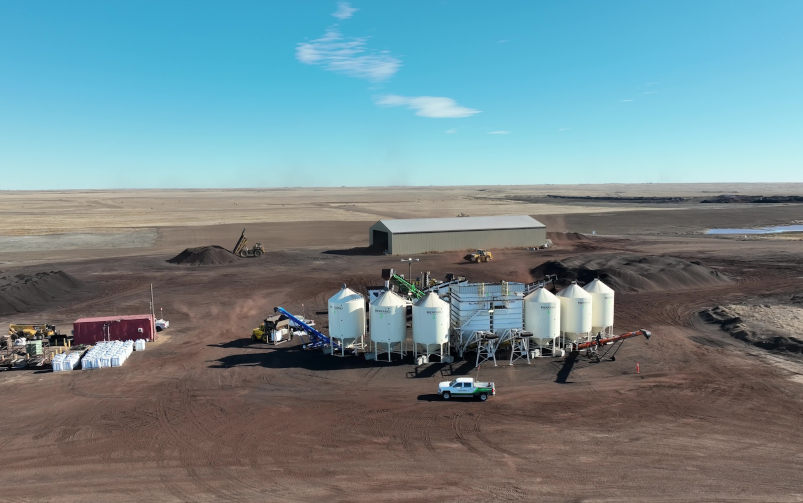
The sustainability landscape can be a complex field to navigate, especially in Alberta—a province recognized for its abundant natural resources and farmland. There, amid a heartland of prairies, WestMET Ag is tapping into a mine of economic and agricultural opportunities. In CIM Magazine’s article highlighting the reclamation of the Sheerness coal pit in Hanna, Alta., WestMET Ag shares an outlook beyond restoring the land conditions to also producing future growth potential for mine workers and farmers alike.
WestMET Ag has retrained as many mine workers as possible for reclamation work, continuing to operate under 24-hour shifts while turning to regenerative agricultural solutions such as cover crop planting, native seed mixtures and rotational grazing.
“The goal is always to make [land conditions] the same or better than what were previously,” shares Kyle Hobbs, director operation for WestMET Ag.
That said, the WestMET Ag team isn’t just transitioning site operations but also leading a transformation to unearth next-gen crop nutrients and further local opportunities. In 2020, the company discovered one of the world’s best reserves of humalite on the site.
“It’s very low in heavy metals, it’s certified organic and we have significant reserves of it,” says Clay Williams, agriproducts manager for WestMET Ag and one of the many mine employees who is also a farmer. “It’s a gem, a unicorn of reserves sitting here that we didn’t really know we had. So, we pivoted into it.”
There are millions of tonnes of reserves of humalite at Sheerness that will last for over a century, offering the Canadian agricultural industry a locally sourced and sustainable option for crop nutrition. Hobbs reports that extracting humalite has little impact on the site’s reclamation timeline, as the humalite pits are minimal in size and tonnage compared to coal. When the team is ready to move to the next humalite pit, the previous one is reclaimed.
WestMET Ag has come a long way to drill into the global humic acid market, which is projected to grow to US$1.46 Billion by 2023—in stride with the rising demand for organic fertilizers worldwide. However, WestMET Ag’s work is far from over.
The company is exploring new ways for the Sheerness site to fuel the surrounding communities and workforce, including plans to develop a 13 MWac photovoltaic solar power electrical generation project in partnership with clean energy developer PACE Canada LP on a reclaimed portion of the coal mine.
“That’s why our company diversified to WestMET to allow investors, and that growth, instead of just a coal mine that shuts down and grows grass—which is fine as well. But we want to take it to the next step, and I think we have a great area to do it,” Hobbs affirms.
Reimagining how to take a coal pit to prairieland has already made a profound impact at a global and grassroots level. Kent Viste, general foreman at WestMET Ag, echoes that pivoting to humalite has provided site workers with promising prospects for the future.
“Two to three years ago, everybody was looking at alternatives, but it seems like there’s life again,” Viste states. “The craziest thing is, we’ve been selling humalite for 20 years, and nobody even knows about it around the area. To start a market and industry—that’s the exciting part.”
Read the full article on the CIM Magazine website.

